EU Co-Funded Projects
EU Co-Funded Projects
EOA Lemesos participates in the intoDBP project, which focuses on pollution and the risks associated with disinfection byproducts (DBPs) in drinking water. The project aims to develop innovative tools and processes to improve water quality management for safe human use and a healthy environment. It focuses on protecting watersheds, developing and applying innovative drinking water treatment processes, as well as real-time water quality monitoring using sensors to address the impacts of climate change.
The project began on December 1, 2022, and will run for 48 months. It involves 15 partners from 8 different countries, with a total budget of €3,994,707.
The implementation of the intoDBP project in Limassol involves the installation of specialized sensors and tools such as bioreporters and fluorescence tools in Area 234, along with analysis of the results.
The AQUAMON project (Advanced QUAlity MOnitoring system of water in urbaN areas) focuses on the development of advanced water quality monitoring systems in public water supply networks, utilizing technologies such as Distributed Temperature Sensing (DTS), analyzers, biosensors, and lab-on-a-chip sensors. The project is implemented under the “Horizon Europe” Programme and is funded by the European Commission, with the Centre for Research and Technology Hellas (CERTH) acting as the project’s Coordinating Partner.
The project began on June 1, 2025, and will run for 42 months. It involves 16 partners from 9 different countries, with a total budget of €4,835,095.
The pilot program to be implemented in Limassol aims to develop innovative technologies for remote, real-time (online) monitoring and on-site assessment of drinking water quality within the water supply network, as well as the detection of illegal connections and discharges into the sewer system. Through this project, high water quality and safety are ensured, public health protection is strengthened, and more efficient and cost-effective water infrastructure management and operation is achieved.
EOA Lemesos participates in the project titled FRESHNESS, which focuses on promoting the sustainable management of water and energy resources through the use of innovative tools and technologies. The project is implemented under the Interreg Greece–Cyprus Cooperation Programme, with Aristotle University of Thessaloniki as the Lead Partner.
The project started on January 1, 2025, and will run for 24 months. It involves 5 partners from Cyprus and Greece, with a total budget of €1,125,000.
The Organisation's pilot action aims to address the high energy consumption and increased operational and maintenance costs of water pumping stations. The action focuses on the implementation of devices and systems for continuous monitoring of energy consumption and the proper operation of pumps at selected water pumping stations of the Organization. This is expected to result in reduced energy consumption and operating and maintenance costs, as well as increased pump lifespan—leading to more stable and reliable water supply services.
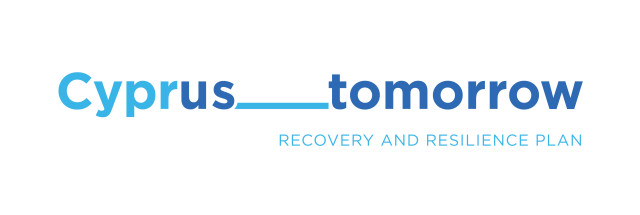
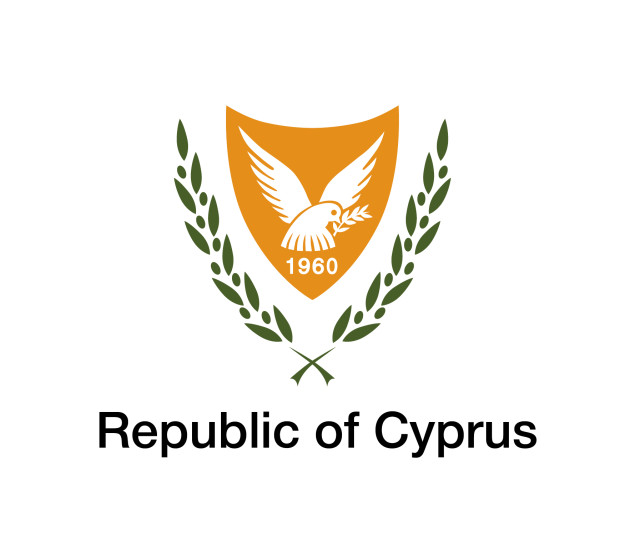


Τhe project is funded by the Recovery and Resilience Facilicy (RRF) of the European Union (Next Generation EU), within the framework of the implementation of the Recovery and Resilience Plan.
The Limassol District Local Government Organisation (EOA Lemesos) has secured funding of €13,000,000 from the European Union’s and the Republic of Cyprus’ Recovery and Resilience Plan for the implementation of the Limassol Smart Water Network-Living Lab project.
Project Scope
The project includes:
- Replacement of 80,000 water meters with ‘smart’ meters – funding: €12,000,000.
- Installation of 200 pressure sensors and 80 water quality sensors (20 multi-parameter sensors and 60 free residual chlorine sensors) in the water supply network – funding: €600,000.
- Control Room – funding: €50,000.
- Development of a Digital Twin and ‘smart’ algorithms for the efficient management of the water supply network – funding: €350,000.
Smart Water Meters
A public tender for the replacement of 80,000 water meters with ‘smart’ meters was awarded to NewCytech Business Solutions Ltd.
The project commenced in August 2024 with a pilot installation of a small number of smart meters to test processes and set up the measurement data infrastructure.
Smart water meters will contribute to:
- Water conservation,
- Water loss reduction,
- Immediate consumer updates on water consumption at their premises,
- Reducing high bills caused by water loss within premises,
- Improved management of the water supply network,
- Faster detection of leaks and faults in the network,
- Enhanced service provided by the EOA Lemesos.
The smart meters consist of conventional water meters fitted with a special communication device:
- which detects the rotation of the meter’s register indicators and translates this into water consumption. The consumption data is stored in the device's memory and transmitted daily to the measurement data infrastructure.
- which is programmed to send alarms in cases of:
-
- Unusually high water consumption
- Unusually low water consumption
- Water leakage
- Interruption in consumption (stopped meter)
- Tampering with the meter
- Negative water consumption (reverse meter movement)
The smart meters will transmit daily recorded measurements to the measurement collection and processing infrastructure (specialised software), where the data will be archived and made available to various departments and systems of the organisation. This will enable further analysis and more efficient management of the water supply network.
Conventional water meter
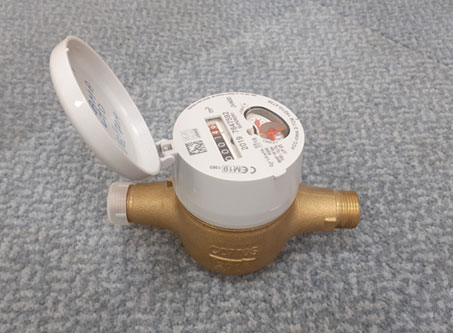
Smart water meter + Measurement collection
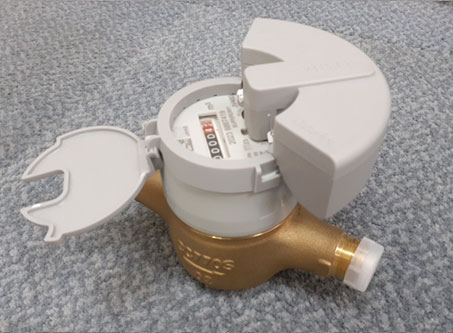
Pressure and Water Quality Sensors
A contract has been awarded through an open tender to the company METRICA Precision Measuring Systems S.A. for the supply and installation of 200 pressure sensors and 80 water quality sensors (including 20 multi-parameter sensors and 60 free chlorine residual sensors) in the water supply network.
The project commenced in March 2024.
So far, 20 multi-parameter sensors have been installed at selected inlet or outlet points of reservoirs. Additionally, 6 free chlorine residual sensors and 17 pressure sensors have also been installed.
Multi-Parameter Water Quality Sensors
The term ‘multi-parameter water quality sensors’ refers to a set of sensors that simultaneously monitor multiple chemical parameters of water quality. In this project, the selected parameters for simultaneous monitoring include: Conductivity, Free chlorine residual pH, turbitidy, and temperature. These are key indicators of water quality.
The multi-parameter sensors have been installed at selected inlet or outlet points of central reservoirs or specific locations within the water supply network (20 locations).
Each Multi-Parameter Sensor Installation Includes:
- An outdoor metal kiosk or an indoor metal box,
- A pump or a pressure-reducing valve (PRV),
- A complete set of four sensors (conductivity, free chlorine residual, pH, and turbidity),
- A telemetry device,
- All necessary tubing and cables.
Data from the sensors is transmitted every 5 minutes to the Organisation's Telemetry Platform.

Multi-parameter kiosk
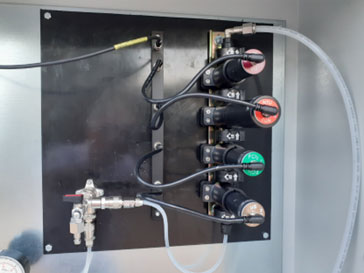
Set of 4 sensors (conductivity, free chlorine residual, pH, and turbidity)
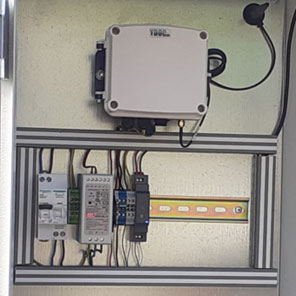
Telemetry device
Free Chlorine Residual Sensors
Free chlorine residual sensors measure the chlorine remaining in the water after disinfection. This is a key indicator of water quality and the proper functioning of disinfection systems.
A total of 60 free chlorine residual sensors will be installed at selected locations within the water supply network, including at the entry points of sealed District Metered Areas (DMAs), and at the outlet points of reservoirs.
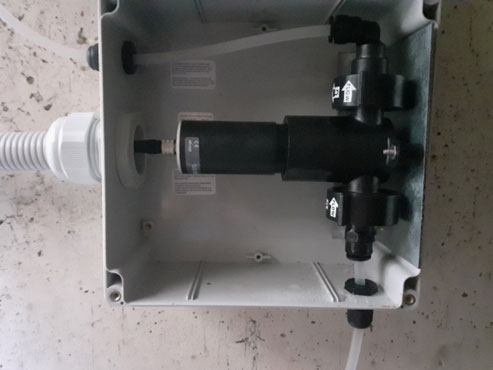
Free chlorine residual sensor
Each free chlorine residual sensor installation includes:
- Data from the sensors is transmitted every 5 minutes to the Organisation's Telemetry Platform.
- An outdoor plastic enclosure,
- A pressure-reducing valve (PRV),
- A complete single-sensor unit,
- A telemetry device,
- All necessary tubing and cables.
Pressure Sensors
Pressure sensors will be installed at various points throughout the network. They will continuously monitor network pressure in each District Metered Area (DMA)—a defined network area with a single water entry point. These pressure measurements will contribute to the accurate operation of the hydraulic models of the network, as well as the proper functioning of the Digital Twin and smart algorithms for the efficient management of the water supply system.
A total of 200 pressure sensors will be installed in the water supply network, with 2 to 6 sensors per DMA.
Each Pressure Sensor Installation Includes:
- Excavation to locate the water pipeline,
- Installation of a “saddle” and a connection pipe leading to the pavement surface (the end of the pipe is housed in a small plastic box with a metal cover on the pavement),
- Restoration of the excavation,
- Installation of a small plastic box with a metal cover to house the pressure sensor,
- Concrete base installation for the telemetry station’s metal pole,
- Restoration of the pavement to its original condition,
- Installation of the pressure sensor inside the small plastic box,
- Installation and programming of the telemetry station, which includes an electronic data recording and communication device, a solar panel, a battery.
Data from the pressure sensors is transmitted every 5 minutes to the Organisation's Telemetry Platform.
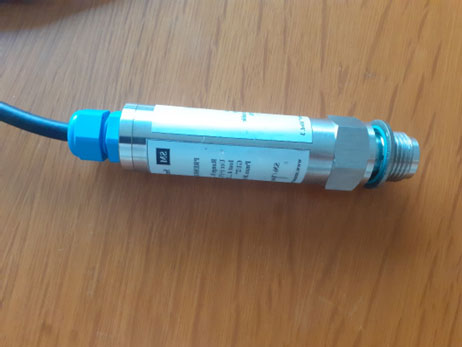
Pressure sensor
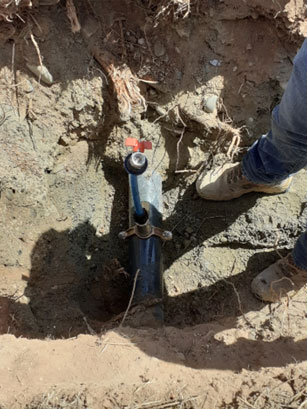
Excavation to locate the water pipeline, and installation of a “saddle” and connection pipe.

Installation of a concrete base for the metal pole of the telemetry station.
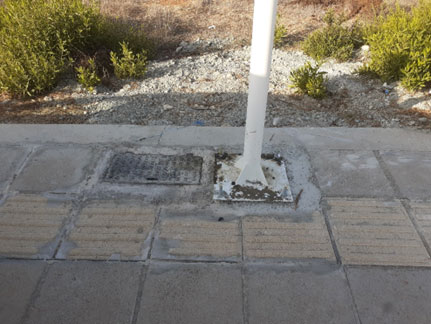
Pavement restoration to its original condition.
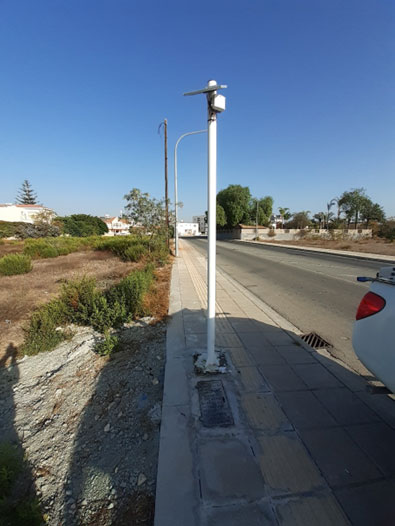
Installation of the telemetry station on the pole
(including the electronic data recording and communication device, solar panel, and battery).
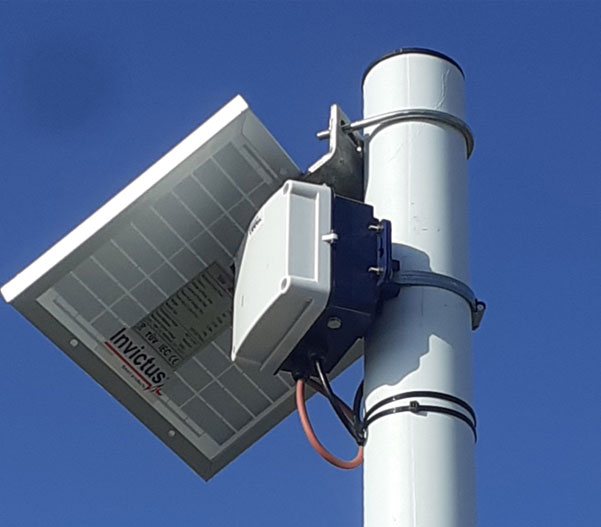
Installation of the telemetry station on the pole
(including the electronic recording and communication device, solar panel, and battery).
PROJECT DETAILS
More specifically, the project falls under:
- Priority Axis 2: "Rapid Transition to a Green Economy",
- Special Objective 2.3: "Smart and Sustainable Water Resource Management".
Policy Objective:
The project aims to significantly contribute to the green transition and environmental sustainability by supporting national targets for climate neutrality, energy efficiency, and renewable energy sources. It promotes reforms in the fields of climate and energy, sustainable transport, water resource management, and the environment in general.
Find all project-related information on the website of the Cyprus Recovery and Resilience Plan – Communication Strategy and Implementation Plan for Publicity Actions | Cyprus Tomorrow.
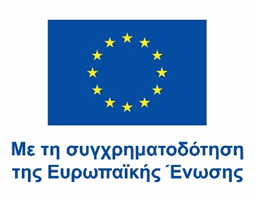
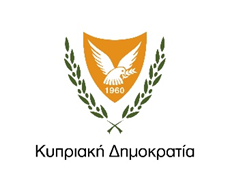
Cohesion Policy Programme “THALIA 2021-2027”
Major Limassol Flood Prevention Works
PROJECT DESCRIPTION
The project concerns the construction of a 21-kilometre stormwater collection network, which will direct rainwater either into an existing drainage system or into rivers, depending on the area. The project will extend across the five municipalities under the jurisdiction of the Sewerage Board of Limassol-Amathus (SBLA). To minimise traffic congestion, the project is implemented in phases with a predefined execution timeline.
OBJECTIVES
This project is part of the SBLA’s strategic flood protection plan for specific areas in Greater Limassol that are vulnerable to flooding. It is expected to significantly reduce the risk and impact of floods in the city.
EXPECTED / ACTUAL RESULTS
Upon completion, the project is expected to protect approximately 1,700 hectares from flooding, and benefit an estimated population of 75,000 residents.
CONTRACTS
The Major Limassol Flood Prevention Works are being executed under two contracts: Consulting Engineering Services (Contract No. 14/2017) and Construction Works (Contract No. 4/2020 – Contract F5). The total budget for both contracts amounts to €20,018,525 (excluding VAT).
Contract No. 14/2017 “for consulting services (supplementary studies, tender document preparation, bid evaluation, and construction supervision)” was awarded to Z&A P. Antonaropoulos and Partners on 12 September 2018.
Contract No. 4/2020 for the construction of the flood prevention infrastructure in Limassol (Contract F5) was awarded to the IACOVOU – ZEMCO (SL) Joint Venture on 10 February 2021. The construction works commenced on 4 March 2021 and are expected to be completed within 30 months.
PROJECT DETAILS
This project is being implemented under the "THALIA 2021-2027" Cohesion Policy Programme, co-financed by the European Union.
Specifically, it falls under:
Priority Axis 5: "Adaptation to Climate Change and Transition to a Circular Economy".
Specific Objective 2.4: Promoting climate change adaptation, disaster risk prevention, and resilience, incorporating ecosystem-based approaches.
Policy Objective: A greener and more resilient Europe with low carbon emissions and on the path to a net-zero carbon economy, by promoting fair energy transition, green and blue investments, circular economy, climate change mitigation and adaptation, disaster risk prevention and management, and sustainable urban mobility.
LIFE19 ENV/IT/000004 – LIFE EBP
The LIFE EBP programme focuses on the development of eco-friendly, multipurpose bio-based products derived from organic municipal waste (including garden trimmings, food scraps, and other organic residues, etc.)
Programme Objectives:
a) Assessing the environmental, economic, and social benefits of utilising urban bio-waste in the agricultural sector (e.g., compost use) and in the development of new bio-products in industry (e.g., bio-based plastics).
b) Establishing partnerships between stakeholders and promoting industrial-scale production using these new bio-based products.
Photos from the presentation of the LIFE EBP programme (“Eco-friendly multipurpose Bio-based Products from municipal biowaste”) to the staff.
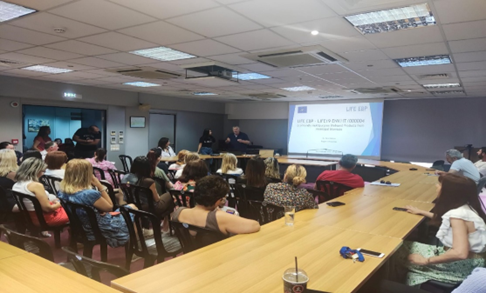
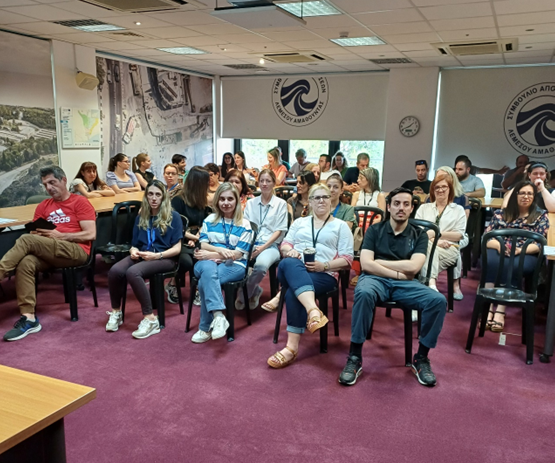
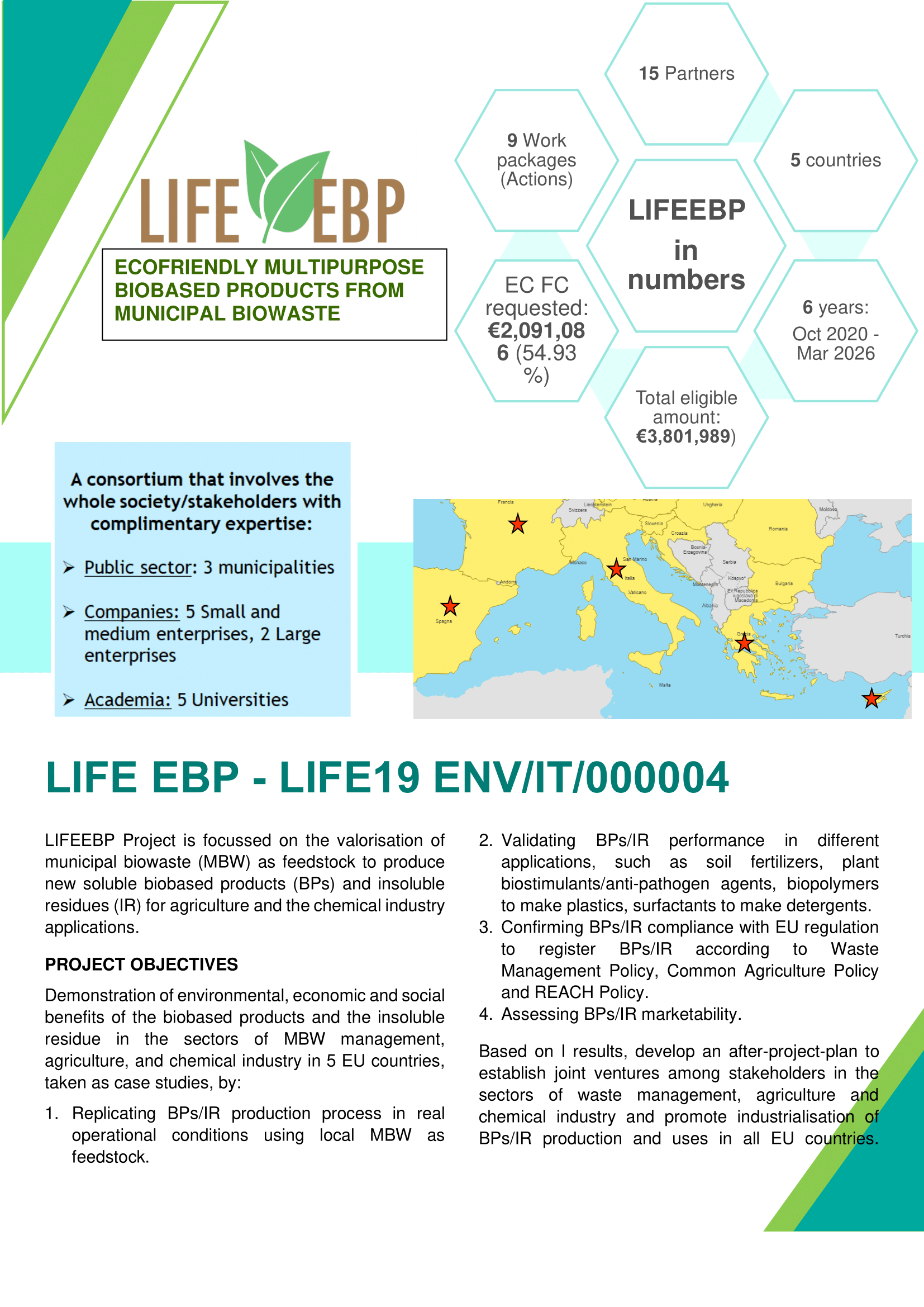
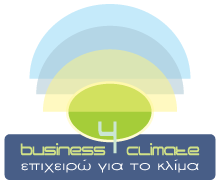
Business4Climate – Engaging Businesses in Climate Action
The Federation of Employers & Industrialists (OEB), the Cyprus University of Technology (CUT – project coordinator), and the Department of Environment (Ministry of Agriculture, Rural Development, and Environment) are participating in the European Business4Climate Programme. The programme aims to involve businesses in climate action, with the goal of reducing greenhouse gas emissions by 8% by 2030.
The project’s key actions include: developing a methodology to measure greenhouse gas emissions; training businesses on climate action strategies and identifying available and planned financial tools and funding schemes to support climate initiatives.
The project is funded by Climate-KIC, through the Regional Innovation Scheme of the European Institute of Innovation & Technology (EIT).
For more information, click here.


Participation of the Water Board of Lemesos (WBL) in the Waterverse Project
The Water Board of Lemesos is participating in the Waterverse project, funded under the European HORIZON 2020 Programme. The project aims to support water network management organisations, regulatory authorities, and other stakeholders in actively contributing to the advancement of the European Data Strategy.
The DigiWATER project has been approved for funding by the Research and Innovation Foundation. The Water Board of Lemesos (WBL) is participating in the project in collaboration with the KIOS Centre of Excellence for Research and Innovation at the University of Cyprus. The project has a total budget of €245,700. Through the implementation of DigiWATER, continuous water quality monitoring will be enabled, allowing WBL to effectively comply with the new European Directive on drinking water quality requirements.
The WBL continues to invest in new technologies, particularly in the water supply network and decision-making processes, based on previous data and predictive models for the future network operation. These investments take into account long-term uncertainties in the water sector, shifts in water consumption patterns, changes in water infrastructure, and the impact of climate change on global water resources. The main objective of WBL, through its participation in this project, is to improve consumer satisfaction in terms of service and water quality. Additionally, the WBL seeks to ensure compliance with national and European laws and regulations on drinking water quality.